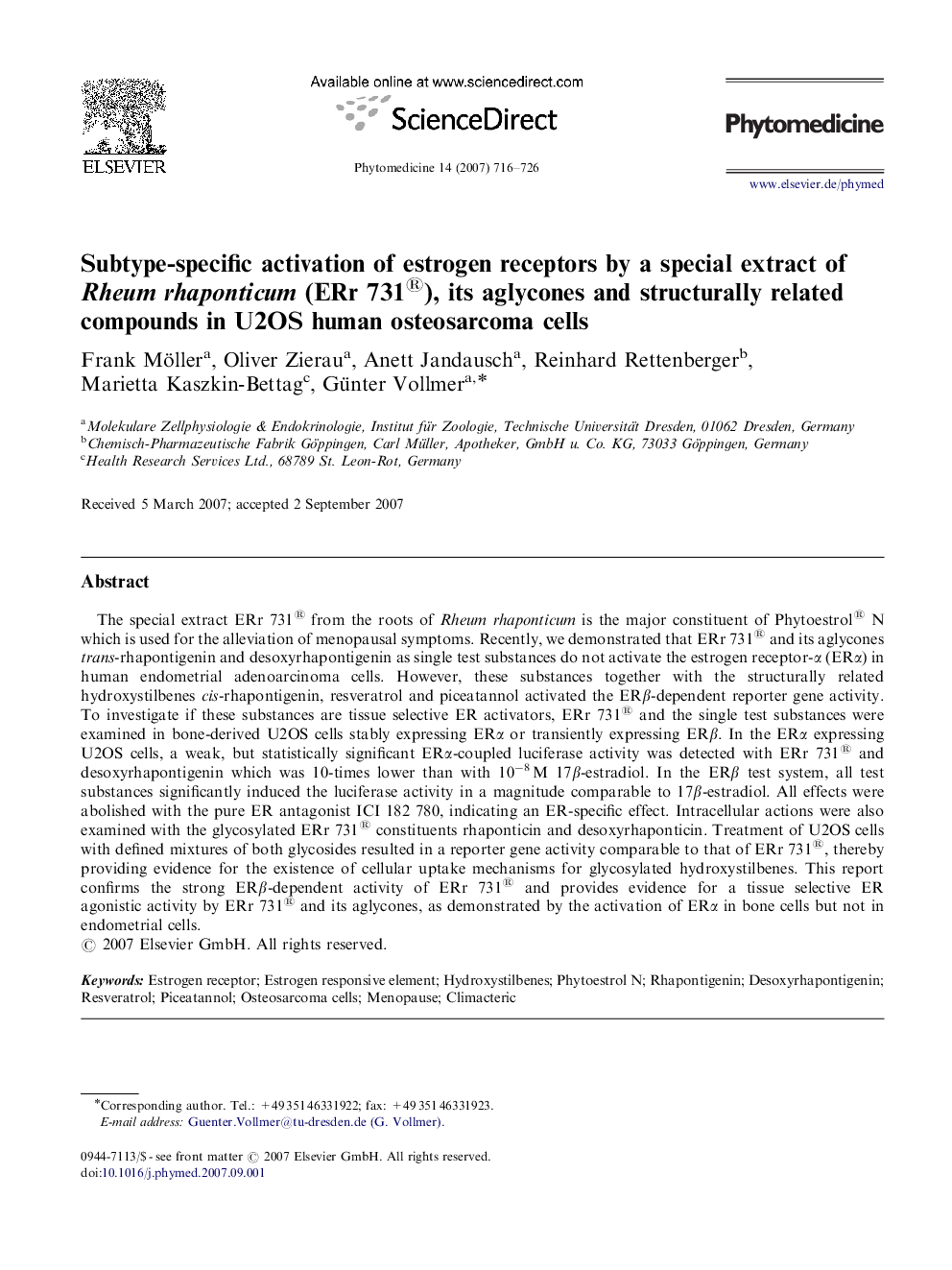| Article ID | Journal | Published Year | Pages | File Type |
|---|---|---|---|---|
| 2497823 | Phytomedicine | 2007 | 11 Pages |
The special extract ERr 731® from the roots of Rheum rhaponticum is the major constituent of Phytoestrol® N which is used for the alleviation of menopausal symptoms. Recently, we demonstrated that ERr 731® and its aglycones trans-rhapontigenin and desoxyrhapontigenin as single test substances do not activate the estrogen receptor-α (ERα) in human endometrial adenoarcinoma cells. However, these substances together with the structurally related hydroxystilbenes cis-rhapontigenin, resveratrol and piceatannol activated the ERβ-dependent reporter gene activity. To investigate if these substances are tissue selective ER activators, ERr 731® and the single test substances were examined in bone-derived U2OS cells stably expressing ERα or transiently expressing ERβ. In the ERα expressing U2OS cells, a weak, but statistically significant ERα-coupled luciferase activity was detected with ERr 731® and desoxyrhapontigenin which was 10-times lower than with 10−8 M 17β-estradiol. In the ERβ test system, all test substances significantly induced the luciferase activity in a magnitude comparable to 17β-estradiol. All effects were abolished with the pure ER antagonist ICI 182 780, indicating an ER-specific effect. Intracellular actions were also examined with the glycosylated ERr 731® constituents rhaponticin and desoxyrhaponticin. Treatment of U2OS cells with defined mixtures of both glycosides resulted in a reporter gene activity comparable to that of ERr 731®, thereby providing evidence for the existence of cellular uptake mechanisms for glycosylated hydroxystilbenes. This report confirms the strong ERβ-dependent activity of ERr 731® and provides evidence for a tissue selective ER agonistic activity by ERr 731® and its aglycones, as demonstrated by the activation of ERα in bone cells but not in endometrial cells.
